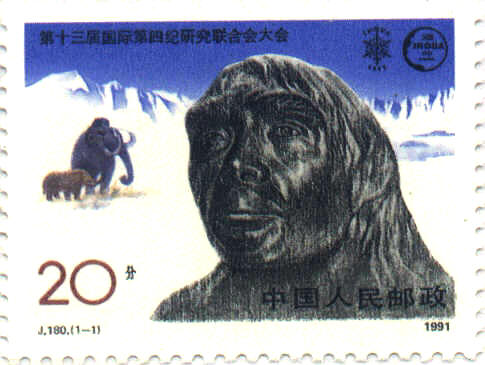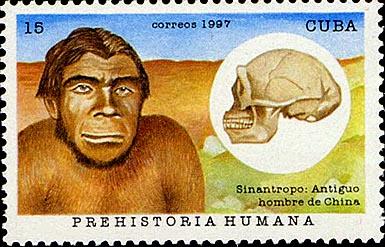Homo (Sinanthropus pekinensis) erectus
CHINA
CUBA
BIOLOGY:
I will be relying on material contained in Ursula King's book, 'Spirit of Fire, The Life and Vision of Teilhard de Chardin' (1). Peking Man or Sinanthropus is associated with a dig site at Chou-Kou-Tien (now called Zhoukoudian) about 30 miles southwest of Peking. Let me proceed to summarize, in point form, some of what Dr. King relates regarding the excavations at Chou-Kou-Tien.
- In 1926 two teeth were discovered at the site (presumably by Chinese excavators). A Canadian paleontologist, a friend of the French Jesuit, named Davidson Black considered these teeth to be human, but Teilhard (who was then headquartered in Peking and associated with the dig site at Chou-Kou-Tien) was not sure about this.
- In December 1929, the Chinese scientist, Pei Wenzhong, found a complete skullcap embedded in some porous rock at the dig site.
- Both Black and Teilhard were in agreement that this skullcap was human and were quite excited about the find.
- Further excavation work brought more fossils out of the dig site including 14 skullcaps, facial bones, limb bones, the teeth of about 40 individuals, as well as shaped stone, bone and antler tools.
- Teilhard had a role to play in the dating of the remains, and estimates ranged from 700,000 to 200,000 years old, with 500, 000 to 450, 000 years of age considered to be likely.
- The presence of ash, cinders, charred animal bones, as well as the remains of what appeared to be hearths at the dig site, suggested that Peking Man may well have domesticated fire.
- By the winter of 1930 Teilhard had brought a cinder, from Chou-Kou-Tien, with him to Europe. This cinder was then compared to other cinders found at prehistoric sites on the European continent. Based on these comparisons, scientists came to the conclusion that Sinanthropus probably had domesticated fire.
- On page 129 of her book, Ursula King presents us with a photo of the skull of a typical Sinanthropus based in the fossils excavated at Chou-Kou-Tien.
The discovery of Perking Man or Sinanthropus was a collaborative effort among Chinese and Western scientists. And in that collaborative effort, Teilhard had an important role to play.
I
believe it is generally accepted that the discovery of Peking Man constituted
the most important paleontological find with which Teilhard was directly
associated.

